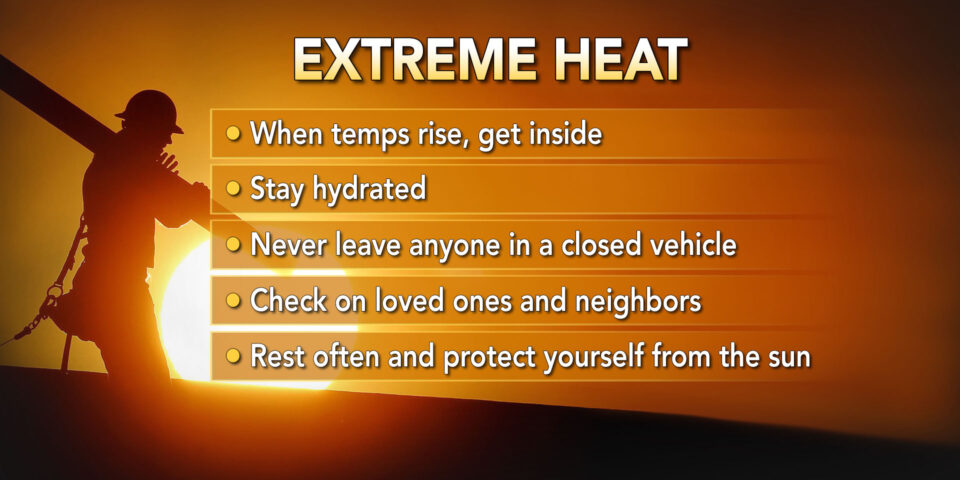Oregon Office of Emergency Management – 08/09/21 3:59 PM
SALEM, Ore. — The National Weather Service has issued an excessive heat watch for many parts of Oregon from August 10-14; dangerously hot conditions with triple-digit temperatures and minimal overnight cooling are possible throughout the state.
The Office of Emergency Management (OEM), Oregon Health Authority (OHA) and Oregon Department of Human Services (ODHS) urge the public to take proactive actions to help reduce the risk of heat-related illnesses that can lead to heat exhaustion and heat stroke. These lead agencies continue to coordinate statewide needs and resources and assess impacts to meet the needs of Oregonians. They are collectively sharing and amplifying heat-related messages to the public, encouraging Oregonians to stay safe and drink plenty of fluids, stay in air-conditioned rooms, take advantage of cooling centers, remain out of the sun, and check in on neighbors, friends and loved ones.
“We know excessive heat conditions can be extremely dangerous and must be taken seriously,” said OEM Director Andrew Phelps. “We are asking Oregonians to pull together and prepare for the inevitable effects of high temperatures. Take time now to make a plan to stay cool as temperatures rise – make sure your plan includes connecting with friends, family or neighbors who may be susceptible to extreme heat and offering to help them access the resources they need. The simplest act to help can save lives.”
ODHS encourages people who need relief from the high temperatures to connect with 211 for information on cooling center locations, hours and transportation to the centers. Dial 211 and wait for the prompt to find hot weather-related resources, including a list of cooling centers by county. The 211 service will keep its prompt operating 24/7 for the rest of summer. Cooling center information is also available at 211info.org.
Oregonians should stay informed on the heat index and conditions when planning activities and find ways to stay cool and hydrated; the heat index measures how hot it feels outside when factoring in humidity with the actual air temperature. Individuals should also learn how to prevent, recognize and treat heat-related illnesses.
OHA provides several easily accessible resources for members of the public, local health departments and other organizations to assist ongoing outreach efforts to those most vulnerable to extreme heat events. The agency urges people to contact their primary care provider or visit an urgent care facility if they begin to experience heat-related illnesses such as heat exhaustion, heat cramps, sunburn, heat rash or other non-emergent medical care needs.
People over the age of 65 and those with a chronic medical condition, such as heart disease, high blood pressure, diabetes, cancer or kidney disease, may be less likely to sense and respond to changes in temperature. Also, they may be taking medications that can worsen the impact of extreme heat. People in this category should be closely monitored to make sure they’re drinking enough water, have access to air conditioning and know how to keep cool. Those who exercise in extreme heat or work outdoors are more likely to become dehydrated and get heat-related illnesses and should pay particular attention to staying as cool and hydrated as possible.
For more information, visit:
- Preventing Heat-related Illnesses (OHA): https://www.oregon.gov/oha/ph/Preparedness/Prepare/Pages/PrepareForExtremeHeat.aspx
- Extreme Heat (CDC): https://www.cdc.gov/disasters/extremeheat/index.html
- Warning Signs and Symptoms of Heat-related Illness (CDC): https://www.cdc.gov/disasters/extremeheat/warning.html
# # #











